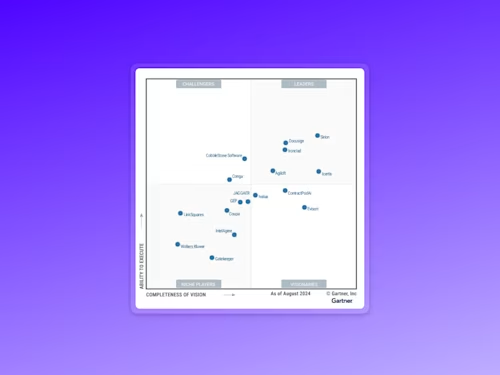
Metadata: what is it and how does it connect photos and agreements
What is metadata? Here we look at it is and how it connect agreements and photos together by making them more intelligent.

There's more in common between company agreements and personal photos than meets the eye, especially when it comes to metadata.
Perhaps you're a proud owner of a pet, your partner and children are beyond photogenic, and/or perhaps you love sharing photos of food and nature. Chances are, your smartphone has hundreds if not thousands of cherished photos that are worth more to you than you'd like to admit.
While having lunch with a friend, you'd like to show them a photo of some amazing latte art you came across a few months ago while on vacation in Berlin. You pull out your smartphone, open the photos manager, type in "coffee" or "Berlin", and voila. Instead of scrolling through six months worth of photos, a simple search helped you quickly identify the photo that you're looking for.
The magic behind this capability lies in your smartphone's photo manager. When you took the photo, the photo manager automatically categorised the photo by applying metadata.
What is metadata?
Metadata is essentially a set of simple data that describes the subject of interest, in this case, a photo. Examples of metadata applied to a photo include the date the photo was taken, orientation (landscape or portrait..or selfie), and the file size of the photo.
Why is metadata important?
With the advent of new technology, your photo manager has become much more intelligent. It can automatically identify additional context in your photos and apply additional pieces of metadata such as the location of the photo, items or objects within your photo (eg. bike or latte). It can also leverage facial recognition to identify the individual's in your photo. This makes it much easier to find what you're looking for in a sea of photos.
Believe it or not, agreements and contracts are no different.
Examples of metadata (sometimes referred to as attributes) applied to an agreement include:
Contract owner (internal)
Contract effective date
Contract type (NDA, MSA, SOW, etc)
When you leverage a contract lifecycle management (CLM) solution to generate your agreements, metadata is automatically captured and applied to the agreement so that you can easily group and locate agreements.
A CLM solution can also automatically capture additional metadata such as:
Governing law (England, Belgium, Germany, etc)
Department (sales, procurement, finance, etc)
Payment terms (30 days, 60 days, etc)
Contracting party
Why is metadata important for agreements?
From an agreement perspective, metadata not only makes it easier to search for contracts in the future, it also helps drive downstream automation:
Approvals
If it's an NDA with "Governing Law" of England, route to Jenny in legal for approval, whereas if it's an NDA with governing law of Belgium, route to Bobby instead. Additionally, if it's an MSA with standard payment terms of 30 days, send directly for signature; if payment terms are non-standard (60 days for example), then route for legal (or finance) approval. The workflow and logic is entirely configurable and can mirror your current processes.
Expiration Date
Additionally, "Contract Expiration Date" could be metadata that is auto-filled. For example, if it's an NDA, set "Contract Expiration Date" to 36 months after the "Contract Effective Date" whereas if it's an MSA, set "Contract Expiration Date" to 24 months after "Contract Effective Date". You can get as specific as you'd like with layering on additional pieces of metadata to set the "Contract Expiration Date".
Approvals and auto-setting expiration are just two of an infinite number of automations and processes that can be driven by metadata.
Metadata can also be used to search and identify contracts, and it can also be leveraged for reporting in your CLM. Imagine being able to identify on a monthly basis all contracts with England as the "Governing Law" that have a "Contract Expiration Date" within three months. The possibilities are endless once your agreements have metadata.
Conclusion
Although selfies and NDA's don't usually go in the same sentence, they both benefit greatly from metadata. When it comes to agreements, a robust CLM will streamline the application of metadata to your agreements allowing you to drive downstream automation and also easily identify single contracts or generate specific reports. Advanced CLM's will even allow you to create custom metadata that's specific to your business needs.
Docusign CLM was recently named a Leader in the Gartner Magic Quadrant for Contract Lifecycle Management. Learn how CLM can drive productivity, visibility, and help you manage risk in the contract process in our eBook: Contract Lifecycle Management 101. For secure and legally recognized electronic agreements, consider using Docusign eSignature, which offers comprehensive eSignature features to streamline your document signing processes. It's important to note that electronic signatures are legally recognized in the UK, making them a valid and efficient option for various types of agreements.
Related posts
 Insights for LeadersUpdated 11 Feb 2025
Insights for LeadersUpdated 11 Feb 2025

8 Contract Management Trends to Watch in 2025
Discover what's new with Docusign IAM or start with eSignature for free


